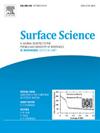Development process and evolution mechanism of microstructures of friction-induced plastic deformation layers on UHMWPE
IF 1.8
4区 化学
Q3 CHEMISTRY, PHYSICAL
引用次数: 0
Abstract
UHMWPE is a vital material used in artificial joint replacements because of its excellent mechanical properties and wear resistance. This study systematically investigated the development process and the evolution mechanism of plastic deformation of UHMWPE. The plastic deformation layer that protrudes at the edge of the groove grows gradually and stabilizes over time, while a higher rotation speed leads to a faster development of the protruded plastic layers. Raman spectroscopy results in the worn surface show increased crystallinity in the plastic deformation layers, especially at the groove edges, implying ordered distributions of microstructures. The scratch and indentation results indicate a densely packed but anisotropic distribution of microstructures in UHMWPE. Additionally, MD simulation results indicate that the frictional process creates ordered distributions of polyethylene chains, thereby enhancing the interaction strength between adjacent molecular chains. The compactly arranged polyethylene chains flow along the frictional direction as the Fe slab moves linearly, and show the potential to separate from the undeformed substrate in UHMWPE, forming the plastic deformation layer. More PE chains aligned parallel to friction at the initial stage could result in greater plastic deformations. These results offer new insights into the wear mechanisms of UHMWPE, showing that the wear of UHMWPE is closely linked to the development of the plastic deformation layer.

超高分子量聚乙烯摩擦塑性变形层微观组织发展过程及演化机制
超高分子量聚乙烯具有优异的机械性能和耐磨性,是人工关节置换的重要材料。本研究系统地研究了超高分子量聚乙烯塑性变形的发展过程和演化机理。在凹槽边缘凸出的塑性变形层随着时间的推移逐渐增长并趋于稳定,而转速越高,凸出的塑性层发展越快。拉曼光谱结果显示,磨损表面的塑性变形层结晶度增加,特别是在凹槽边缘,这意味着微观结构的有序分布。划痕和压痕结果表明,超高分子量聚乙烯中微结构密集排列,但呈各向异性分布。此外,MD模拟结果表明,摩擦过程使聚乙烯链有序分布,从而增强了相邻分子链之间的相互作用强度。当铁板线性移动时,排列紧密的聚乙烯链沿摩擦方向流动,并显示出与超高分子量聚乙烯中未变形基板分离的潜力,形成塑性变形层。在初始阶段,更多的PE链与摩擦平行排列可能导致更大的塑性变形。这些结果为UHMWPE的磨损机理提供了新的见解,表明UHMWPE的磨损与塑性变形层的发展密切相关。
本文章由计算机程序翻译,如有差异,请以英文原文为准。
求助全文
约1分钟内获得全文
求助全文
来源期刊

Surface Science
化学-物理:凝聚态物理
CiteScore
3.30
自引率
5.30%
发文量
137
审稿时长
25 days
期刊介绍:
Surface Science is devoted to elucidating the fundamental aspects of chemistry and physics occurring at a wide range of surfaces and interfaces and to disseminating this knowledge fast. The journal welcomes a broad spectrum of topics, including but not limited to:
• model systems (e.g. in Ultra High Vacuum) under well-controlled reactive conditions
• nanoscale science and engineering, including manipulation of matter at the atomic/molecular scale and assembly phenomena
• reactivity of surfaces as related to various applied areas including heterogeneous catalysis, chemistry at electrified interfaces, and semiconductors functionalization
• phenomena at interfaces relevant to energy storage and conversion, and fuels production and utilization
• surface reactivity for environmental protection and pollution remediation
• interactions at surfaces of soft matter, including polymers and biomaterials.
Both experimental and theoretical work, including modeling, is within the scope of the journal. Work published in Surface Science reaches a wide readership, from chemistry and physics to biology and materials science and engineering, providing an excellent forum for cross-fertilization of ideas and broad dissemination of scientific discoveries.
 求助内容:
求助内容: 应助结果提醒方式:
应助结果提醒方式:


